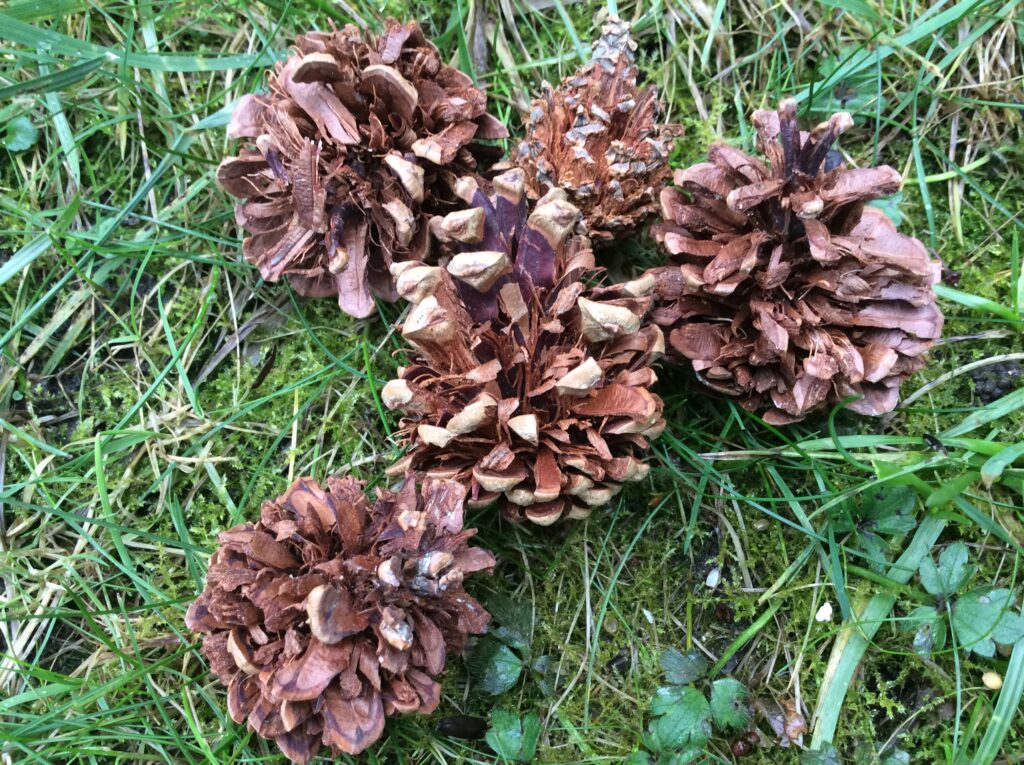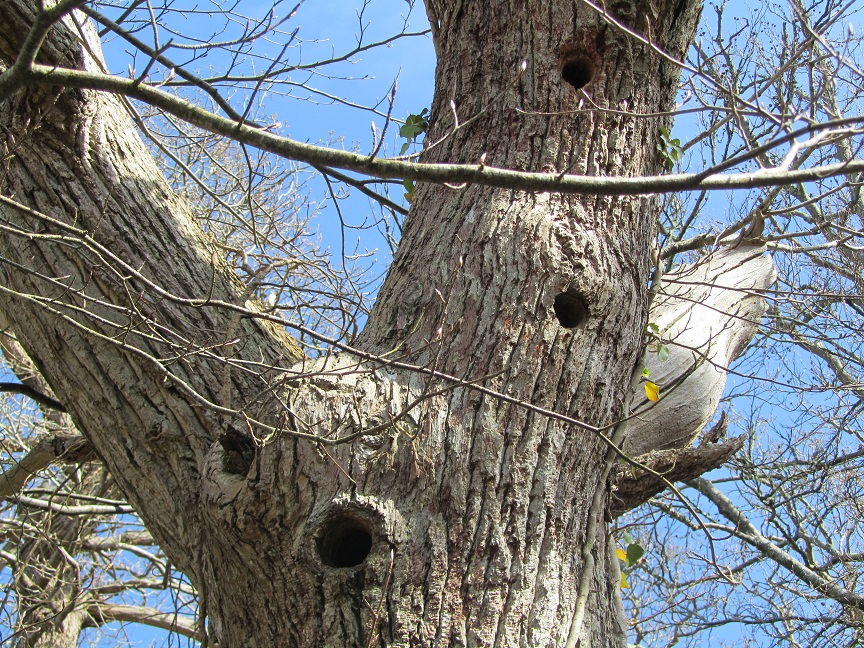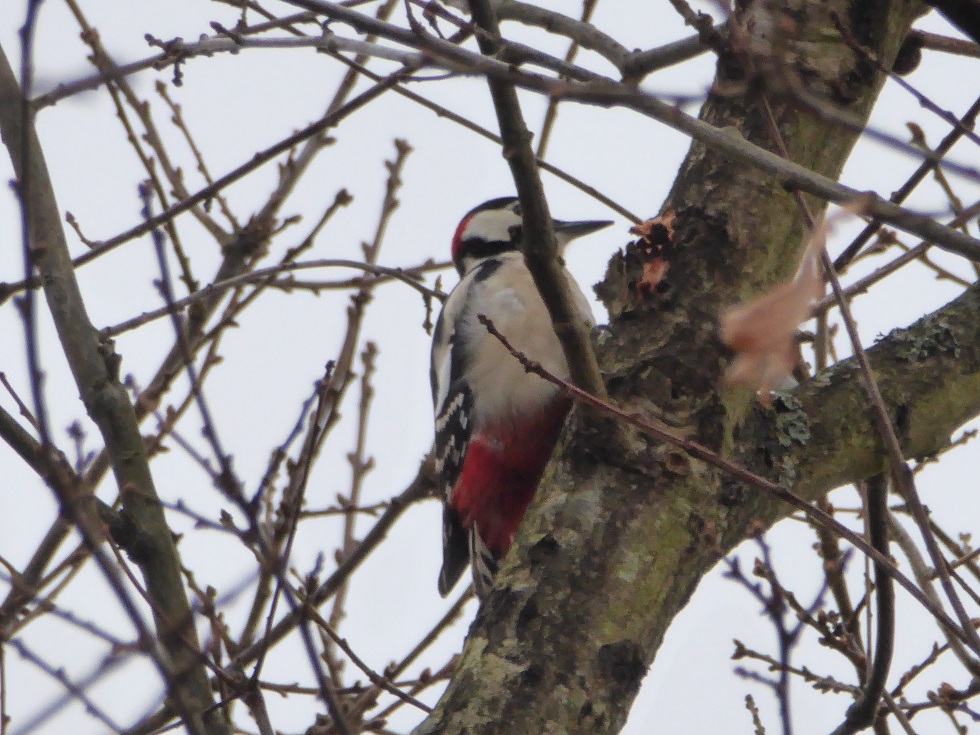Drummers of the woods
Although the month ahead can still be wintery, there are signs to listen out for that will help awaken you from winters deep slumber. Most noticeably our garden songbirds are more active and vocal – singing to signpost their territories and eagerly checking out nest boxes. However, for me, it’s the harsh and piercing call of the woodpecker and their distinctive drumming that signals the cheery start of a new season. Read on to learn about these noisy heralds of early spring.
Happily, the New Forest is home to all three species of British woodpecker. So firstly, it’s a matter of knowing where to look and listen to find them.
The green woodpecker is a large bird with a red crown, but its green plumage makes it difficult to see in trees. Fortunately, it spends much of its time on the ground feeding on ants. Wood ants really like conifer woodland and will build their nests alongside open south-facing tracks that allows the sunlight to warm their nests. Look for large piles of ‘thatch’ – conifer needles, small twigs and dried grass – this is the upper part of the ant’s hill and can get over 1 metre tall!
Amazing fact: A woodpecker tongue is up to 4 inches long depending on the species, and it wraps around the skull when it is retracted. Many woodpecker tongues are barbed to help them extract ants and their larvae from ant nests – an ant kebab! – and insects deep inside trees and holes.
Although the green woodpecker is a shy bird, it is noisy with an unmistakably loud ‘yaffle’ cry, like hysterical laughter. Its sudden piecing cry can be startling!
The most common woodpecker in Britain is the great spotted woodpecker which will often visit gardens looking for peanuts and fat balls during the winter. They are pretty common in woods too. However, to find the rare lesser spotted woodpecker you’ll need to visit ancient deciduous woodland. The ancient oaks in the New Forest make perfect feeding posts, pecking bark and rotten wood to expose hidden insects such as wood boring beetles and weevils and their larvae.
Woodpeckers are instantly recognizable by the unique way they peck vertically on trees, using their short stiff tail feathers for support and clawed zygodactyl feet – two toes facing the front and two toes facing the back – which give them exceptional grip. Great spotted woodpeckers will often wedge fir cones in a crevice in a tree trunk. Look for discarded rough, torn-looking cones under a conifer tree, pecked open to extract their seeds.

Both spotted woodpeckers have black and white plumage, with barred wings; only the males have a red crown. The lesser spotted woodpecker is tiny, about the size of a house sparrow, is shy and have declined in numbers so they can be difficult to find.
Luckily, woodpecker nest holes are easy to spot. Woodpeckers simply drill their own nest holes by chipping away at dead or living wood to make a deep chamber inside a tree. Surprisingly, nests are only used once and are occupied by other species in following years.

Bizarrely, the rapid drumming you hear in early spring is not the sound of woodpeckers excavating a nesting hole but is for communication. Woodpeckers do not sing like songbirds, instead they drum their bills rapidly on a suitably resonant branch to attract a mate and to advertise a territory.
The exact pattern of the drumming will vary in tempo, length, and rhythm depending on the woodpecker species. Green woodpeckers rarely drum, preferring their loud ‘yaffle’ call, whilst the lesser drums faster and longer than the great spotted. Both male and female woodpeckers will drum.
So why don’t woodpeckers get a headache from pecking? Well, they have thick skulls to cushion their brain and head from hard impacts, and strong neck muscles which allow them to drum without harm. Their bills are also thick and straight to withstand drumming impacts.
Tip: Cup your hands behind each ear to help amplify the far-carrying drumming sounds, whilst slowly turning your head. Stop in the direction the sound is the loudest. Then slowly walk in that direction, stopping to occasionally to re-tune and check the direction with your ears – it’s a fun hide and seek game! Binoculars will then help you spot them once your closer – remember to keep looking up.
I love the fact that the ‘drummers of the woods’ are vociferously reminding us that spring is just around the next branch.


Comments are closed